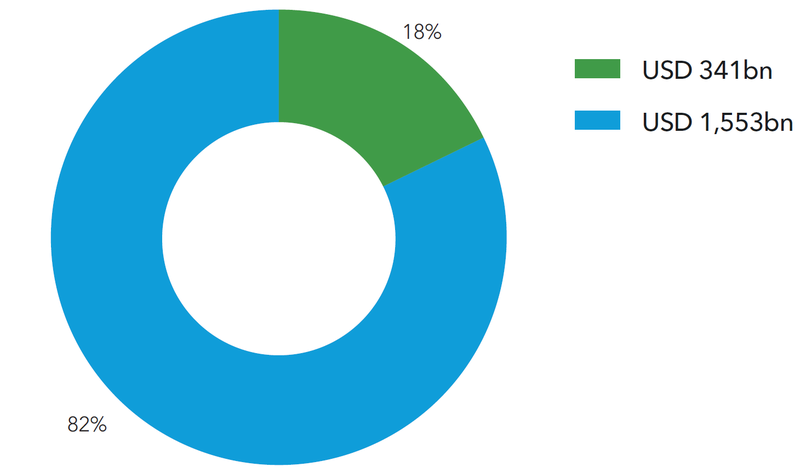The publication today of the fifth of classification society DNV‘s annual Energy Transition Outlook reports, has served only to reinforce the impression of a ‘Cassandra' forecaster whose dire global heating warnings continue to be ignored.
The executive summary of the latest publication compiled by the Norwegian business states: “It is sobering to reflect … that the pace of the energy transition has not accelerated beyond our first forecast.”
The bad news is stark, with the energy consultancy predicting that current policies have us on track for a global temperature rise of 2.3 degrees Celsius this century, with the world set to fall well short of halving CO2 emissions this decade and reaching net zero by mid century.
pv magazine print edition
The failure of policymakers to use Covid recovery packages to reset global industry – with the honorable exception of the EU – means the Covid-19 pandemic is now a “lost opportunity,” according to Oslo-based DNV, with the world on track for only 9% fewer energy-related emissions in 2030, and 45% fewer 20 years later.
That the global economy and energy industry will change beyond recognition by mid century is not disputed by DNV, which predicts the world will host 11.5 TW of solar generation capacity in 2050 – 7.6 TW of solar panels and 3.9 TW of solar-plus-storage, and including 800 GW of off-grid photovoltaics dedicated to hydrogen production and 130 GW of other off-grid arrays, alongside cheap battery systems, for energy access purposes.
The world will install 300-500 GW of panels annually after 2030, a quarter of it alongside energy storage facilities at that point, and rising to 50% by mid century. That rise in storage will reflect DNV's prediction the current prohibitive cost of adding batteries to solar farms – more than double the cost of just solar at present – will fall to less than 65% this decade. That price differential at the end of this decade, will be offset by the greater income from solar-plus-storage projects as PV continues to drive down the cost of grid electricity.
Solar's capacity factor – the amount of time in a given window during which any power plant generates at maximum capacity – will rise from its current 19%, to 26% by 2050, DNV predicted, at which point Greater China will have installed 35% of the global solar generation fleet, and the Indian subcontinent 20%.
Energy storage deployment will rise as a necessary concomitant of renewables roll-out, said the consultancy, with 240 TWh of vehicle-to-grid systems in 2040 – almost as much volume as two to four-hour lithium ion battery storage facilities. By 2050, there will be 20% more pumped hydro, and more-than-five-hour storage tech – such as vanadium redox flow batteries, zinc chemistries, and compressed air storage – will account for almost 1 TWh.
Carbon capture
However, with DNV predicting gas will be the major source of energy in mid century, the need for hydrogen production and, even more critically carbon capture and storage tech, will be crucial. On our present path, the Norwegian organization said, only 3.6% of fossil fuel CO2 emissions will be abated in mid century.
As far as hydrogen is concerned, DNV predicted 16% of the energy storage medium produced by the world's 3 TW of electrolysis capacity will be fired by dedicated, off-grid solar capacity.
Digging down into the global regions studied by the consultant, cheap solar for hydrogen production will change the energy landscape of Latin America by 2050, DNV said, and photovoltaics – including extensive off-grid arrays – will supply almost 40% of African power by that point. China has already achieved peak coal, the report stated, but the EU will miss the mid century net zero aim of its ‘Fit for 55‘ program and northeast Eurasia – for which, read ‘Russia‘ – was dismissed as “a laggard on decarbonization.”
This content is protected by copyright and may not be reused. If you want to cooperate with us and would like to reuse some of our content, please contact: editors@pv-magazine.com.




By submitting this form you agree to pv magazine using your data for the purposes of publishing your comment.
Your personal data will only be disclosed or otherwise transmitted to third parties for the purposes of spam filtering or if this is necessary for technical maintenance of the website. Any other transfer to third parties will not take place unless this is justified on the basis of applicable data protection regulations or if pv magazine is legally obliged to do so.
You may revoke this consent at any time with effect for the future, in which case your personal data will be deleted immediately. Otherwise, your data will be deleted if pv magazine has processed your request or the purpose of data storage is fulfilled.
Further information on data privacy can be found in our Data Protection Policy.